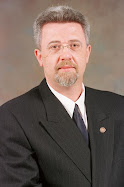 With great fanfare the Consumer Federation of California (CFC) announced on February 27th, 2007 that "...every Californian deserves access to high quality, affordable health coverage"--a noble concept, indeed.
With great fanfare the Consumer Federation of California (CFC) announced on February 27th, 2007 that "...every Californian deserves access to high quality, affordable health coverage"--a noble concept, indeed.I certainly agree that “Our health care system is a disaster for the uninsured and insured alike. Nearly seven million Californians are uninsured. Co-payments for workers are skyrocketing, and businesses that cover their employees are being crushed under the rapid escalation in insurance premium rates."
When originally introduced to this naive country and promoted by then, and still, misguided and ill qualified Mrs. Clinton and her Jackson Hole task Force, it was defined as: " A prepaid risk-based system of integrated health care delivery, having appropriate capabilities to improve quality of care and manage utilization and cost of a given population.” (Thomas Morrow, MD., at NMHCC/IT Fall 1998, Los Angeles, CA)
Here are my postulates of "Mangled Care" vs Managed CarING:
•If someone is already paying a lot, let him or her continue
•Even if a lot of people complain about quality of managed care, it won’t contain cost
•Never provide coverage unless the treatment is unpleasant
•Quality is being in a waiting room with people who earn more money than you do
Managed care is an oxymoron by default--this system that should have been providing health carING, while managing costs--in its present form is better described as mangled health care.

The for-profit (and very profitable) “managed care” companies have embraced, and are functioning under divergent and practically mutually exclusive core values.
These companies are obligated to provide (or rather severely ration) health care services. They are also obligated to generate consistent profits for the executives and shareholders of those companies.
•The payor never requests, does not receive nor order the service.
•The orderer does not pay nor receive the service.
Governor Schwarzenegger, a traditional foe of pro-patient health care reforms, now says he wants to address the health care crisis. Unfortunately, the governor’s proposal puts too much of the burden on the uninsured, and it fails to control cost increases. Similarly, Sen. Kuehl “Zelda’s Single Payor Legend” falls far short of the target.
While it’s true that every other industrial democracy offers universal health coverage to its citizens, it does not translate into universal health carING, and in the case of Canada and England is actually counter-productive.
Surely, universal health care made some inroads in Hawaii, but only because it is a State with a super tight control of population---there are no immigrants (especially illegal) pouring over the boarder from the rest of the world. California, from the point of health care services, is a perpetual bottomless barrel, with fixed amounts of moneys paying into the system, while an ever-increasing numbers of residents generate a snowball demand for services.
Before declaring that health care (not just basic and/or catastrophic), but in fact “appropriate” (cosmetics?) health care “…is a right, not a privilege – and every Californian deserves access to high quality, affordable health coverage…” the CFC might want to clarify the definition of a “Californian” to prevent even faster emptying of the “bottomless barrel”.
CFC’s purposely trying to confuse general public and exert undue influence on Legislators by implying that just because they are uninsured resident of California, they are uncared for. Nothing can be further from the truth--the tax-paying and health insurance-paying Californians are actually paying for the care of the un/under insured.
I also disagree with CFC’s assertion on the issues of providing “…universal health insurance for all Californians at no added cost simply by taking the for-profit insurance industry waste out of the system and using those dollars for the delivery of health services”.
Health consumers can request and receive health carING from doctors, nurses, pharmacists, hospitals, labs, pharmaceutical companies, etc, without mangled care companies.
Doctors, nurses, pharmacist, hospitals, labs, pharmaceutical companies, etc, can provide health carING without mangled care companies.
Healthcare consumers (Payors) can pay for health carING without mangled care companies.
Only complete elimination of the middle man-managed care companies can generate enough money to provide universal health carING.
Its time to move from patient-driven to health consumer-administered health carING.
California Government can only guarantee universal health care when all of the recipients of such care, including the illegals, pay their fare share.
Be Well!


































